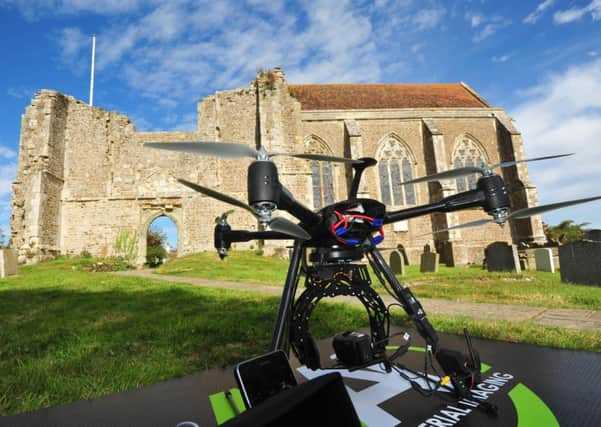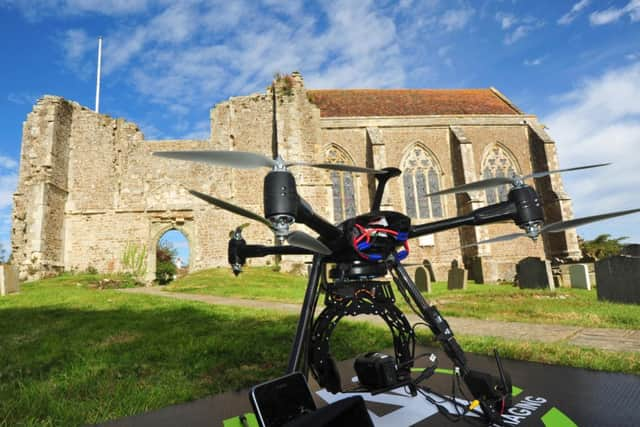Hi-tech aerial survey for church


A crowd of onlookers gathered to watch the small quad-copter drone buzzing around the churchyard and tower like a busy insect surveying hard to reach areas.
It came about as a generous free demonstration by hi-tech company Advanced Aerial Imaging (AAi).
Advertisement
Hide AdAdvertisement
Hide AdOperated by remote control, the drone contains two motors and two sets of propellers on each of its four arms. It can hover and travel at speeds of 3.6 to 50 metres per second and is approximately 2ft high by 3ft wide.


A high definition video camera attached to its base was used to survey the church roof without Richard the architect needing to leave the ground. Instead he could watch the filming on the monitor screen while the drone buzzed around the church roof piloted by one of the AAi (Advanced Aerial Imaging) team.
The company was set up by ‘Chief Pilot’ Simon Dunn who has a background in flying helicopters and Boeing 747’s.
Simon explained to the audience the benefits of using an unmanned aerial vehicle for inspecting roofs. Currently the only way to make these inspections is by using scaffolding.
Advertisement
Hide AdAdvertisement
Hide AdHowever, this can be expensive and unsightly whereas the drone method means any elevated section can be inspected from the ground in greater detail, quickly and more cost effectively.
The technology is expensive (£20,000 for a drone) but daily hire costs can be reasonable depending on the structure involved. It was a free demo for the church which now has some exceptional images of the roof for future reference.